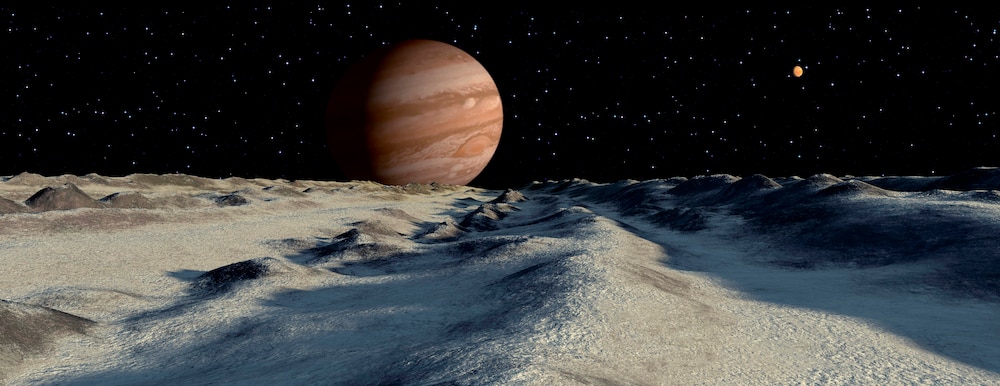Create a free profile to get unlimited access to exclusive videos, sweepstakes, and more!
On frozen planets, there might be aliens at the end of the rainbow
It's definitely weirder than a pot of gold.

Hypothetical microbes that exist beyond Earth may or may not be life as we know it, but if they are some type of life-form we recognize, they might give off a rainbow of signals.
Microbes that lurk in the ice just on the edge of the Arctic Circle can survive naked under conditions that could take down humans in layers and layers of protective gear. These microorganisms can survive frigid temperatures, punishing radiation, dry air, and overall lack of nutrients in some of the most extreme places on Earth. Sound familiar? Try Europa. Enceladus. Titan. Startlingly similar conditions may be a breeding ground for alien micro-things.
Frozen worlds may be hiding something that only a powerful telescope can see. Microbes that thrive in ice produce different biopigments, and the signatures of these colors can be seen from space in spectra that are invisible to the the human eye. Lígia Coelho of Cornell University and Instituto Superior de Agronomia and Técnico, who led a study recently published in Astrobiology, wanted to see what they would look like to a space telescope seeking out life.
“Some of these biopigments protect microbes from extreme conditions in Earth's cryosphere, but also on the surface of some exoplanets,” she told SYFY WIRE. “Thus, they would be a useful feature for extraterrestrial microbial life living in such environments.”
Ice only appears colorless until you look at the things squirming inside it under a microscope. Coelho collected samples of ice in Canada’s Hudson Bay to find colorful life-forms that could be analogous to things we don’t even yet know exist — if they do exist. She and her team took a closer look at the ice to identify microbes, which they then grew in a lab to measure their reflectance. From all the light that hits a surface, reflectance is the amount of light reflected off of it. A floating telescope could possibly detect this reflected spectral signature from far out.
To make sure that space telescopes with super-vision are able to see the spectral signatures of biopigments in the future, the researchers let them self-replicate at different levels of hydration so they could find out how dry a planet or moon they could possibly withstand. Biosignatures actually get a boost of intensity from drier environments. Meaning, if they are waiting to be found somewhere, telescopic eyes should be focused on freezing planets and moons where it is drier than Earth. Dehydration isn’t the only kind of brutality some microbes can survive.
“Some of the microbes we identified were previously characterized as radioresistant, such as the case of Bacillus safensis, a microbe even flagged as a planetary protection potential hazard,” said Coelho. “So they could survive where you and I would be in trouble.”
She found that there were also certain species of Acinetobacter and Pseudomonas (don’t ever run into the pathogenic ones because yikes) that could take extreme cold, dryness, and hunger. With the different spectral signatures these microbes gave off, the researchers created a catalog that will be useful to telescopes literally looking for extraterrestrial life. It might not show up right away. The icy surfaces of Europa and Enceladus are bombarded with so much radiation that it is unlikely an entire molecule of biopigment will last, but parts of it might.
Then there is Titan. It rains methane and ethane on Jupiter’s second largest moon, and while that would be toxic to us, it is possible that at least some of that methane is made by methanogens, or microorganisms that live in hypoxic (low-oxygen) environments we would never be able to breathe in. They metabolize other substances to produce methane. Whether or not this moon has any methanogens, Coelho thinks that some form of what she likes to call “weird life” might have spawned on Titan.
“In the case of Titan, life that uses carbohydrates as a solvent instead of water should be more likely,” she said. “Could biopigments also exist on worlds like Titan? There is no reason to think they cannot.”


























